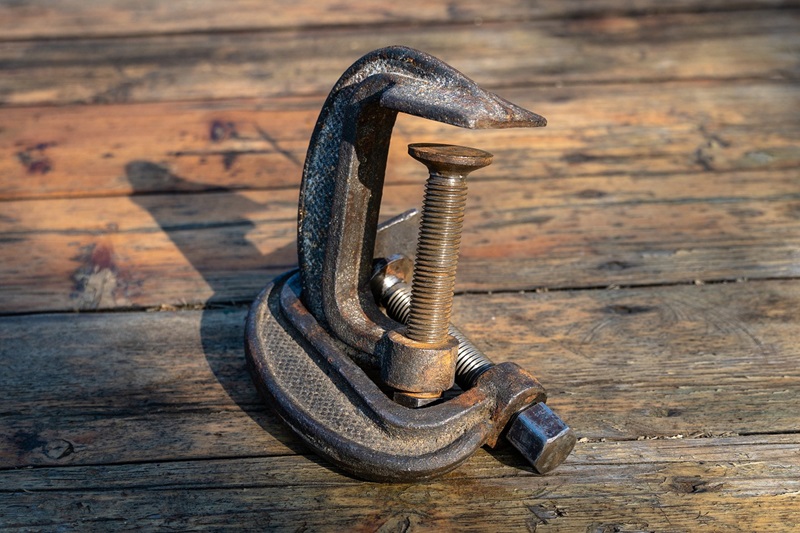Have you ever found yourself at the intersection of home improvement and machinery, winding up feeling utterly lost while searching for the perfect clamping knobs? Perhaps an unexpected repair job on a piece of equipment led you down this seemingly complicated path? Or maybe you’re just the enthusiastic DIY home improver, eager to optimize your machinery’s performance? Either way, the importance of selecting the correct clamping knobs cannot be understated. This guide is curated specifically to help you navigate these unknown waters.
Understanding the fastening hardware world, and more specifically, the role of clamping knobs, can seem overwhelming to anyone unfamiliar with it. These components may be small, but they carry a significant responsibility in providing a firm grip and final tightness. This humble function, when done correctly, enhances the effectiveness and longevity of your machinery. So how can we make the right choice? The answer lies within the intricate mixture of attributes, uses, material and design considerations.
In the following sections, we will lift the curtain that shrouds the all-important factors governing the choice of clamping knobs. We’ll delve into the reason behind their existence, the different types available, and how to determine the best fit for your requirements. From understanding their performance pros and cons to exploring smart selection strategies, we’re about to take a deep dive into the world of clamping knobs.

The Relevance of Clamping Knobs
Why bother with clamping knobs? Could we not simply use regular fasteners or any random knob for this purpose? Well, that’s where the rubber meets the road. Clamping knobs are remarkable due to their ability to be adjusted by hand, eliminating the need for tools. Imagine being able to effortlessly install or remove them, and to fine-tune the clamping force with ease – A versatility which regular fasteners or random knobs cannot flaunt!
In addition to the above, clamping knobs ensure a better leverage, enhance ergonomics, and are less prone to loosening up due to vibrations. Aesthetically, they can make your machinery look much more coordinated and finished. To top it all, the choice of material can allow these knobs to endure tough conditions, prolonging their life and that of your equipment.
In terms of cost, these knobs balance functionality and affordability. Considering all these factors, it makes sense why these knobs have become an integral part of our machinery world.
Types of Clamping Knobs and Their Unique Features
Delving into the types of clamping knobs, we initially face an ocean of options. Sorting the sea into manageable streams, you’ll come across categories like wing knobs, four-prong knobs, mushroom knobs, and many others, each having its unique features and specific suitability.
Wing knobs, for example, are popular for their easy grip and ergonomic benefits. Mushroom knobs, on the other hand, serve well in high-torque applications due to their larger size. Four-prong knobs provide a firm grasp and are therefore chosen for heavy-duty applications or when wearing gloves.
Material Matters: What to Consider
The robustness of clamping knobs is another focal point in our guide. The different materials used in the production of these knobs determine not only their toughness and durability but also factors like comfort, resistance to chemicals and environmental conditions.
For instance, plastic knobs work well for most indoor applications, are cost-effective, and comfortable to handle. Metal knobs are durable, resistant to most solvents, and provide strength for heavy-duty clamping tasks. On the other hand, stainless steel knobs display superior resistance to corrosion, making them a prime choice for food processing or marine applications.
The Impact of Design on End-Use
The design of clamping knobs should not merely be judged by aesthetics alone. The style of a knob can dictate its comfort in hand, ease of use, and even affect the final tightness it can provide.
Mushroom and lobed knobs are generally easier to grip, especially when a large turning force is required. T-handle and wing knobs, on the other hand, are excellent for lighter applications where precision rather than torque is needed.
Pros and Cons of Clamping Knobs
The pros of clamping knobs are many, starting from ease of installation and removal, adjustability of clamping force, superior grip, and ergonomics. They do not require any tools and are available in a myriad of styles and materials to suit diverse applications.
On the flip side, the cons include potential issues like the weak point created at the stem in certain designs, difficulty in use when space is limited, and the possibility of an incorrect choice leading to poor performance.

Five Tips for Select Nicely Fitted Clamping Knobs
- Choose high-quality knobs as they serve longer and offer better performance.
- Consider the environment and its potential impact on the knob material.
- Consider the torque required for the application.
- Opt for ergonomically designed knobs for prolonged use.
- Consult machinery and equipment handbooks for manufacturers’ specifications on clamping knobs.
Conclusion:
The world of clamping knobs is, indeed, an exciting one with so many variables to consider and options to explore. However, choosing the right knob doesn’t have to feel like, well, tightening a rusty bolt. With this comprehensive guide, we hope you feel equipped with the knowledge to make informed decisions. Remember that the ideal knob is a seamless blend of the right type, material, design, and setup for your machinery. In weighing up all the considerations and assessing the pros and cons, you’re sure to arrive at a decision that leads to enhanced equipment efficiency and longevity. So, step into this hardware world with confidence, and enjoy the satisfaction of a job well done. Happy knob hunting!